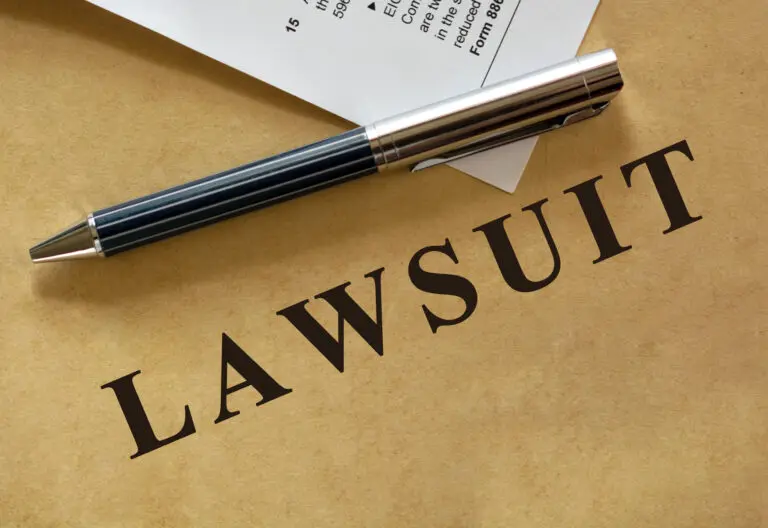Filing for quiebra can be a daunting process, but it can also provide a path to financial relief and a fresh start. Understanding the steps involved and knowing what to expect can help ease the stress and uncertainty that often accompanies this significant financial decision. This comprehensive guide will walk you through the process of filing for bankruptcy, including the different types of bankruptcy, the necessary documentation, and the steps you need to take to achieve financial stability.
Comprender la quiebra
Bankruptcy is a legal process that allows individuals or businesses to seek relief from debts they are unable to repay. There are several types of bankruptcy, each designed for different situations. The most common types for individuals are Capítulo 7 y Capítulo 13. Understanding the differences between these two types is crucial in determining which is the best option for your financial situation.
Quiebra del Capítulo 7, also known as liquidation bankruptcy, involves the sale of a debtor’s non-exempt assets to repay creditors. This type of bankruptcy is typically best for individuals with limited income and few assets. Once the assets are liquidated, most remaining debts are discharged, giving the debtor a fresh start.
Quiebra del Capítulo 13, on the other hand, is known as reorganization bankruptcy. This type allows individuals with a regular income to develop a repayment plan to pay back all or part of their debts over a period of three to five years. Chapter 13 is often preferred by those who wish to keep their assets, such as a home or car, and have the means to make monthly payments under a court-approved plan.
Evaluar su situación financiera
Before filing for bankruptcy, it’s essential to assess your financial situation thoroughly. This includes gathering all relevant financial documents, such as income statements, tax returns, bank statements, and a list of your debts and assets. Understanding your financial standing will help you and your abogado de quiebras determine whether bankruptcy is the right option for you and, if so, which type of bankruptcy to file.
It’s also important to consider alternatives to bankruptcy, such as debt consolidation or negotiation with creditors. These alternatives may provide relief without the need for filing bankruptcy and can have a less severe impact on your credit score and financial future.
Mandatory Credit Counseling
One of the first steps in the bankruptcy process is completing a mandatory credit counseling course. This course, which must be taken from an approved agency, is designed to help you evaluate your financial situation and explore alternatives to bankruptcy. Upon completion, you will receive a certificate that must be filed with your bankruptcy petition. The goal of credit counseling is to ensure that you understand the consequences of filing for bankruptcy and that you have considered all other options.
Presentación de la solicitud de quiebra
Once you have completed the credit counseling course, the next step is to file the solicitud de quiebra. This involves submitting a series of forms to the bankruptcy court, including the petition itself, schedules of assets and liabilities, a statement of financial affairs, and other required documentation. These forms provide the court with a detailed overview of your financial situation and are used to determine your eligibility for bankruptcy and the type of bankruptcy that best suits your needs.
Filing the petition officially starts the bankruptcy process and triggers an suspensión automática. This stay halts most collection actions against you, including foreclosure, repossession, and lawsuits. The automatic stay provides temporary relief from creditors and allows you to work through the bankruptcy process without the immediate threat of losing your assets.
Junta de Acreedores
After filing the petition, you will be required to attend a meeting of creditors, also known as a 341 meeting. This meeting is conducted by the bankruptcy trustee assigned to your case and provides an opportunity for your creditors to ask questions about your financial situation and the information provided in your bankruptcy forms.
During the meeting, the trustee will ask you questions under oath about your financial affairs, assets, and liabilities. It’s essential to answer these questions truthfully and provide any additional documentation requested by the trustee. The meeting of creditors is typically straightforward, and your abogado de quiebras can help prepare you for what to expect.
Developing a Repayment Plan (Chapter 13)
If you are filing for Quiebra del capítulo 13, the next step is developing a repayment plan. This plan outlines how you will repay your debts over the next three to five years. The plan must be approved by the bankruptcy court and should demonstrate that you have enough income to cover your living expenses and make the required payments to your creditors.
The repayment plan will prioritize certain debts, such as secured debts (e.g., mortgage or car loan) and priority debts (e.g., alimony, child support, and certain taxes). Unsecured debts, such as credit card debt and medical bills, may receive a lower percentage of repayment, depending on your disposable income and the value of your non-exempt assets.
Liquidation of Assets (Chapter 7)
For those filing Quiebra del capítulo 7, the trustee will liquidate your non-exempt assets to repay your creditors. Exempt assets, such as your primary residence, a modest car, and necessary household items, are typically protected from liquidation under federal or state exemption laws.
The proceeds from the sale of non-exempt assets are distributed to your creditors according to the priority of claims established by the bankruptcy code. Once the liquidation process is complete, most remaining debts are discharged, meaning you are no longer legally obligated to pay them.
Completing the Financial Management Course
As part of the bankruptcy process, you must complete a financial management course from an approved agency. This course, also known as debtor education, provides guidance on managing your finances, budgeting, and making sound financial decisions. The goal is to equip you with the tools and knowledge to avoid future financial difficulties and ensure a successful fresh start post-bankruptcy.
Condonación de deudas
The final step in the bankruptcy process is the discharge of debts. In a Quiebra del capítulo 7, the discharge typically occurs a few months after the meeting of creditors and the liquidation of assets. In a Quiebra del capítulo 13, the discharge is granted upon successful completion of the repayment plan, which usually takes three to five years.
A discharge eliminates your legal obligation to pay the discharged debts and prevents creditors from taking any further collection actions against you. However, certain types of debts, such as student loans, alimony, child support, and some taxes, are generally not dischargeable in bankruptcy.
Rebuilding Your Credit After Bankruptcy
Filing for bankruptcy will have a significant impact on your credit score and financial reputation. However, with time and responsible financial behavior, you can rebuild your credit and achieve financial stability. Here are some steps to help you rebuild your credit after bankruptcy:
- Obtain a Copy of Your Credit Report: After your debts are discharged, obtain a copy of your credit report to ensure that all discharged debts are accurately reported as such. This will help you start with a clean slate and identify any errors that need to be corrected.
- Create a Budget and Stick to It: Developing and adhering to a budget is crucial for managing your finances and avoiding future debt problems. Track your income and expenses, prioritize essential expenses, and set aside savings for emergencies.
- Apply for a Secured Credit Card: A secured credit card can help you rebuild your credit by demonstrating responsible use of credit. Make small purchases and pay off the balance in full each month to establish a positive payment history.
- Make Timely Payments: Consistently making on-time payments for any remaining debts, such as a mortgage or car loan, and for new credit accounts is essential for rebuilding your credit score.
- Avoid High-Interest Loans: Be cautious of predatory lenders offering high-interest loans to individuals with poor credit. These loans can lead to further financial difficulties and should be avoided.
Legal Considerations and Professional Help
Filing for bankruptcy is a complex legal process that requires careful consideration and planning. It’s essential to consult with a qualified abogado de quiebras who can guide you through the process, ensure that your rights are protected, and help you achieve the best possible outcome for your financial situation.
An attorney can help you determine which type of bankruptcy is appropriate for your situation, assist with the preparation and filing of necessary documents, represent you at the meeting of creditors, and provide ongoing support throughout the bankruptcy process.
Impact of Bankruptcy on Your Future
While bankruptcy can provide significant relief from overwhelming debt, it’s important to understand its long-term impact on your financial future. Quiebra will remain on your credit report for seven to ten years, depending on the type of bankruptcy filed. During this time, you may face challenges in obtaining credit, securing a mortgage, or even renting an apartment.
However, many individuals find that the benefits of bankruptcy, such as the discharge of unmanageable debts and the opportunity for a fresh start, outweigh the negative impacts. By taking proactive steps to rebuild your credit and manage your finances responsibly, you can overcome the challenges posed by bankruptcy and achieve long-term financial stability.
Conclusión
Filing for quiebra is a significant financial decision that can provide relief from overwhelming debt and a path to a fresh start. By understanding the types of bankruptcy, assessing your financial situation, completing the necessary steps, and seeking professional help, you can navigate the bankruptcy process with confidence. With time, effort, and responsible financial behavior, you can rebuild your credit and achieve financial stability, ensuring a brighter financial future.
Attorneys.Media Video Document References
- Is Personal Injury Part of Your Law Practice?
- As an Attorney, How Are You Generating Content for Your Online Presence?
- How Can You Help Potential New Clients Get Their Questions Answered?
- How Do You Differentiate Yourself When Someone Looks Online for Help?
- How Do You Differentiate Yourself as a Criminal Defense Attorney?
- Have You Been Thinking About Video Marketing for Your Law Firm?
- Should Attorneys Use Video Marketing to Attract New Clients?
- What Do Potential Clients See When They Research Your Name Online?
- Cómo puede ayudarle Attorneys.Media









